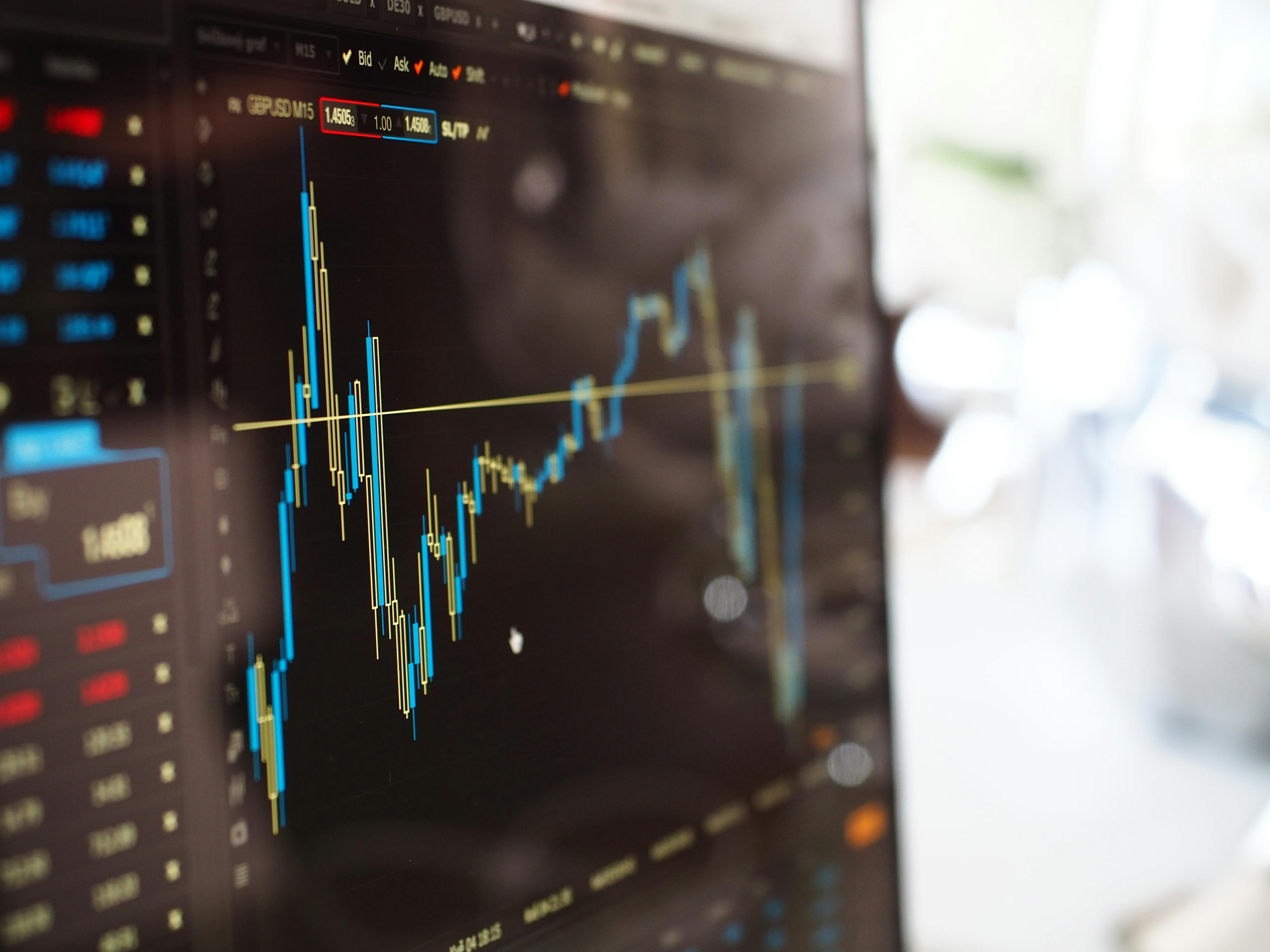Unlocking Market Secrets: A Beginner's Guide to Technical Analysis
Unlocking Market Secrets: A Beginner's Guide to Technical Analysis
The previous guide, Basics of Stock Market, has laid the foundation for your stock market journey. Taking ideas from the last guide, you learned how to buy and sell the stock. How do you know when to buy or sell a stock? What tools can help you manage risks? This is where Technical Analysis (TA) comes into play.
Technical Analysis helps develop the directionality of financial assets such as stocks. But what exactly does this mean for you as an investor?
Let us understand with a simple example.
Imagine you are a farmer. You have bought new land in another town for agricultural purposes; You must decide which crop to plant to maximize your land's productivity.
-Case 1: Researching on Your Own
First, you research your own and consider various factors to lay that crop. Which crop will suit this soil, based on the water conditions, and what is the most appropriate crop for this climate? After going through a huge checklist, we will try it and hope for the best.
The advantage of this technique is that you will know more about the crop you are planting, but this method could be more scalable; you have to check for different crops in your limited time. Hence, there is a low chance that our crop will benefit because it is based on guesswork and restricted information.
-Case 2 Learning from Market Participants
Here, you ask your neighbor farmers which crop they have been harvesting in the past. You will know that a particular crop has a high benefit in that area, and By following them, you will plant that crop based on farmers in that area. There is a high chance that you would benefit by planting that specific crop because you’re relying on proven information from the market participants in that area.
The paramount comfort of this technique is its scalability. You need to know which crop is the best fit and has the most demand in that area, but on the flip side, our Neighboring farmers might only sometimes be correct.
From Fields to Finance: How to Pick Winners in Both Worlds
Case 1 is similar to fundamental analysis in financial markets, where you independently research the stock you buy. We will study fundamental analysis in further guides.
Fundamental Analysis: Fundamental analysis is a way to determine a company's actual value by looking at its finances, business model, management, and the overall economy.
Case 2 is similar to technical analysis, where you plan to buy stocks based on historical data and market participants.
Technical analysis studies market action relating to our farming analogy. You have tools and equipment in farming to help you sow seeds and fertilize land. As a result, you get the proper management to get maximum yield of crops.
Similarly, in Technical analysis, we have tools like historical price data and technical indicators. They help us estimate the direction of the market.
Both approaches solve the same problem: determining the direction in which prices
will likely move. They just approach the problem from different directions. While the Technical analyst studies the effect. Technical analysts focus on the effect, believing that the outcome is all they need to know, and unnecessarily consider the reasons or causes. Fundamental analysts, on the other hand, always seek to understand why.
Technical analyst: A technical analyst studies past market data, primarily price and volume, to predict future price movements. They use charts and indicators to identify patterns and trends in the market.
Fundamental analyst: A fundamental analyst looks at a company's financial health, like its profits and growth, to decide if its stock is a good investment. They study company earnings, revenue, and the overall economy to understand the stock's value.
Like any other research technique, technical analysis has assumptions. As you trade based on technical analysis, you should know these to use them best.
Generally, people argue that one approach is more suitable than the other to approach the market, but fundamental and technical analysis have their merits and demerits. A wise trader will educate themselves to catch investing and trading opportunities in the market.
Master of Markets: How Technical Analysis Fits Everywhere
One of the beauties of technical analysis is that you can apply this method to any asset with historical time series data. Time series data in technical analysis includes price information such as open, high, low, close, and volume.
This analogy can help you learn to play guitar. Once you master the basic chords and techniques, you can play any song, regardless of the genre. Similarly, once you learn technical analysis, you can apply and trade Indian, Crypto, Forex, and Fixed Income.
TA provides flexibility, which is impossible with any other research technique. However, with fundamental analysis, one must read the Annual report of stocks. Fundamentals change when you want to analyze commodities because one has to check with rainfall, harvest, demand, supply, inventory, etc.
Annual report:
An annual report is a detailed document that a company publishes yearly to show its financial performance and activities. It includes information about how much money the company made and spent, what it owns and owes, and plans for the future. It helps investors understand how well the company is doing.
With technical analysis, it will remain the same. It is independent of the asset you are studying. For instance, we apply the same technical indicator for various assets.
Can Technical Analysis Juggle Multiple Time Frames?
Another strength of the technical analysis is its ability to handle different time frames. The same principles apply when trading minute-by-minute changes for Intraday or focusing on longer-term trends. Some believe this technique is only valid for short-term analysis, but that's not true. It can also be very effective for long-term forecasting. Using weekly and monthly charts that span several years, you can successfully apply technical analysis for long-term predictions, just as you do for short-term trades.
What Foundational Beliefs Power Technical Analysis?
Now that you understand technical analysis, it is crucial to know its assumptions. There are three premises on which the technical approach is based.
- Markets discount everything: This assumption means that all factors—fundamental, psychological, and political—are already reflected in the market price. For example, if someone with inside information buys a lot of a company's stock because they expect good earnings, the stock price might rise even before the announcement. This price movement hints to technical analysts that something significant will happen.
- Price moves in trend: All significant moves in the market are an outcome of a trend. Most techniques used in technical analysis are trend-following, meaning they intend to identify and follow existing trends. For example, the recent rise in the NIFTY 50 Index is a good illustration. The index has been reaching new highs and has surged significantly this year. Once a trend is established, prices tend to move in that direction.
Image: The graph shows the recent surge in the NIFTY 50 Index, demonstrating prices follow established trends. (Source: Trading View)
This consistent upward movement in the NIFTY 50 Index highlights the effectiveness of identifying and following trends in technical analysis.
- History repeats itself: The price trend repeats itself in the context of technical analysis. This is because of human psychology, which tends to stay the same. People often react the same way when the direction of prices change. For instance, Nifty is currently trading at All-time High. Investors are optimistic and buy stocks, but everything will sell if markets take a downtrend.
Ever Wonder What Makes Technical Analysis Tick?
Market players often see technical analysis as an easy way to earn money in the stock market because it involves identifying patterns and making trading opportunities for them. However, one must try to learn the technique to reach that stage.
Before Diving deeper into the technical analysis guide, it's essential to understand when and when not to use technical analysis.
When to use it
- Short-term Trading: Technical analysis is ideal for Intraday or Swing trading because it mainly helps capture quick gains based on short to medium-term trends.
- Identifying Entry and Exit points: TA reads price and volume to determine the directionality. It helps traders decide when to enter and exit trades by identifying patterns and signals that indicate potential price changes.
- Volatile and Liquid Markets: Using technical analysis in volatile and liquid markets helps traders get more accurate signals; for Instance, forex markets have very high liquidity, and there is a general notion that technical analysis works perfectly there
Volatile: A market or stock is considered volatile when its prices change quickly and unpredictably, often with large swings up or down.
Liquid Markets: A liquid market is one where assets can be quickly bought or sold without causing a significant change in their price, typically because there are many buyers and sellers.
When to not use TA
As we learned when to use technical analysis, on the flip side, you should also know when not to
- Not Suitable for Long Term: Fundamental analysis is more suitable for the long term because, Over long periods, factors like a company's fundamentals, industry trends, and overall economic conditions have a more significant impact. Let’s Understand this with TCS
For a long-term investment, you choose TCS because of its strong earnings, solid business model, and favorable industry trends, expecting growth over many years. However, in the short term, you decide to short TCS stock due to recent regulatory concerns in the IT sector. Using technical analysis, you identify a MACD crossover signal that supports this short-term bearish move, aiming for quick profits despite TCS's long-term potential.
So, from a long-term perspective, fundamentals play a vital role in the price of assets.
MACD: Technical tool traders use to spot trends in stock prices. It helps identify when a stock might go up or down by comparing two moving averages of its price.
- Unpredictable Events: Technical analysis struggles to predict significant news events, which can be election results, Geopolitical issues, or results of economic events (GDP, Interest rates) because the market sentiment shifts suddenly. So difficult to anticipate this
- Illiquid Markets: Technical analysis often fails in low-liquid assets because where their trading activity is low, those assets are easy to manipulate. Here, general patterns or Indicators of technical analysis don’t work.
Summary:
1. Technical analysis helps determine the direction of financial assets using historical data, such as charts and technical indicators.
2. This method can be applied to various assets as long as historical data is available, making it adaptable to different time frames.
3. Technical analysis is based on a few core assumptions:
-Markets discount everything: All factors are reflected in the market price.
-Price moves in trends: Significant market moves follow established trends.
-History tends to repeat itself: Price trends repeat due to consistent human psychology.
4. In liquid markets, technical analysis identifies short-term trading opportunities but is less suitable for predicting uncertain events and long-term investing.
Put to practice
1. You want to analyze a TCS in multiple time frames to spot the trading opportunities; which analysis is most suitable?
a)Fundamental analysis
b)Technical analysis
2. Why can technical analysis be applied to various assets?
a) It uses universal historical price data and patterns
b)It relies on annual reports and financial data
3. You observe Nifty is hitting an all-time high frequently; what do you do in this situation?
a)Ride the trend according to technical analysis.
b)Wait for a potential pullback before entering the market.
4. Why do you think historically, Nifty has given positive returns every year?
Answer: Based on the core assumption of technical analysis. Nifty gave an average return of 11-14% annually.
However, it's important to remember that past performance does not always indicate future results.






Sarah Williams
February 13, 2025This blog provided an excellent overview of stock market strategies. The section on risk management was particularly helpful for beginners like me!
Rachel Adams
February 13, 2025The tips on identifying undervalued stocks were incredibly useful. I feel more confident in making investment decisions now.